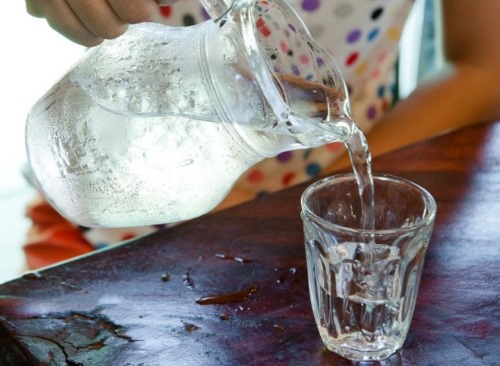It’s only water, right? So, why would you need to wash out your water bottle? If that’s your school of thought, you may want to reconsider. It’s not uncommon for people to infrequently — if ever — wash out their reusable water bottle. To make matters worse, certain shaped, colored, or patterned water bottles make it difficult to see inside. But what if what’s lurking in your water bottle could potentially make you ill?
Black mold in your water bottle
BREAKING: This Keeps Your Blood Sugar Below 100 - Even When You're Eating Sweets!
Let’s face it, your reusable water bottle reduces your carbon footprint, somthing that does a whole lot of good. You know what doesn’t do a whole lot of good — black mold. Molds thrive in warm, moist environments, like showers, baths, toilets, and even your water bottle. So, what exactly is black mold and how does it affect you? “Black mold” is actually several species of mold (or fungus) that have a dark green or black appearance. Stachybotrys chartarum is one of the most toxic black mold species according to research. And, if you’re not cleaning your reusable water bottle, it’s likely living and growing in there right now.
Mold may affect people differently, and may not cause you any grief. But, beware. If you have a sensitivity to mold, or worse, asthma or a mold allergy, symptoms can be severe, suggests the Centers for Disease Control and Prevention (CDC) and may include:
- Stuffy nose
- Wheezing
- Red or itchy eyes, or skin
- Shortness of breath
- Hypersensitivity pneumonitis (a rare illness caused by an immune system response in the lungs after breathing in certain triggers.)
And if black mold wasn’t enough, how about a little E.coli
Yup, you heard that right. In a study from Brazil, researchers asked 30 random members at a gym to hand over their reusable water bottles for testing. They compared the results to 30, unused and contaminant-free bottles. They found bacteria contamination in 83 percent of the reusable plastic bottles. Staphylococcus aureus or black mold was found in 27 percent of the bottles, and E. coli was found in 17 percent. We understand how black mold can grow — but E.coli? Well, gyms can be a little gross for harboring bacteria. But all it takes is not washing your hands after going to the bathroom and then touching your face or bottle while refilling it.
Cleaning tips
If nothing else, a little soap, water, and bottle brush goes a long way towards keeping your water bottle from growing mold and bacteria.
Plastic bottles — Use a bottle brush to reach all the nooks and crannies in your water bottle. If you have an attached straw, you can use a pipe cleaner (available at most craft and dollar stores.) But, with reusable straws selling hot on the market these days, you can likely find a brush specific for straws at your local kitchen store. Use vinegar and baking soda to clean your reusable water bottle. Simply fill your bottle with water and add one or two tablespoons of white vinegar. Throw in a little baking soda, place the lid back on, and shake the bottle well. Allow it to soak overnight.
You can also use hydrogen peroxide to kill mold. Perfect for bottles that haven’t been cleaned since Jane Fonda’s last workout. Wash your bottle with soap and water and then rinse. Pour one-eighth of a cup of hydrogen peroxide into the bottle. Close the lid tightly and shake vigorously. Pour out the hydrogen peroxide and rinse the bottle well.
Metal water bottles — To clean metal water bottles, fill your water bottle with boiling water. This will help eliminate odor and mold growing inside the bottle. After allowing the water to soak for several hours or overnight, wash the inside of the bottle out thoroughly with hot, soapy water and a bottle brush.
FYI it’s best to air dry your water bottle to prevent bacteria from growing.
The safest water bottles
It may be time to throw away those plastic PET bottles. Instead, opt for food-grade stainless steel or glass water bottles. Steel bottles obviously have the advantage of being shatter-resistant. If choosing a steel water bottle, make sure the stainless steel is not just on the outside of the bottle with a plastic liner on the inside. This design defeats the purpose of a steel water bottle in the first place. It should be stainless steel inside and out.
TRENDING: Doctors Can't Believe She Used This To Erase Her Wrinkles...
One last word…
Ok, if you haven’t gotten the message by now, it’s time to give your reusable water bottle a good scrubbing. It really doesn’t take much work to keep your bottle from growing bacteria and mold. The key is to clean it regularly. Think of it like this. If you don’t keep it clean, you might as well be drinking water from your toilet. Point taken? Cheers!









